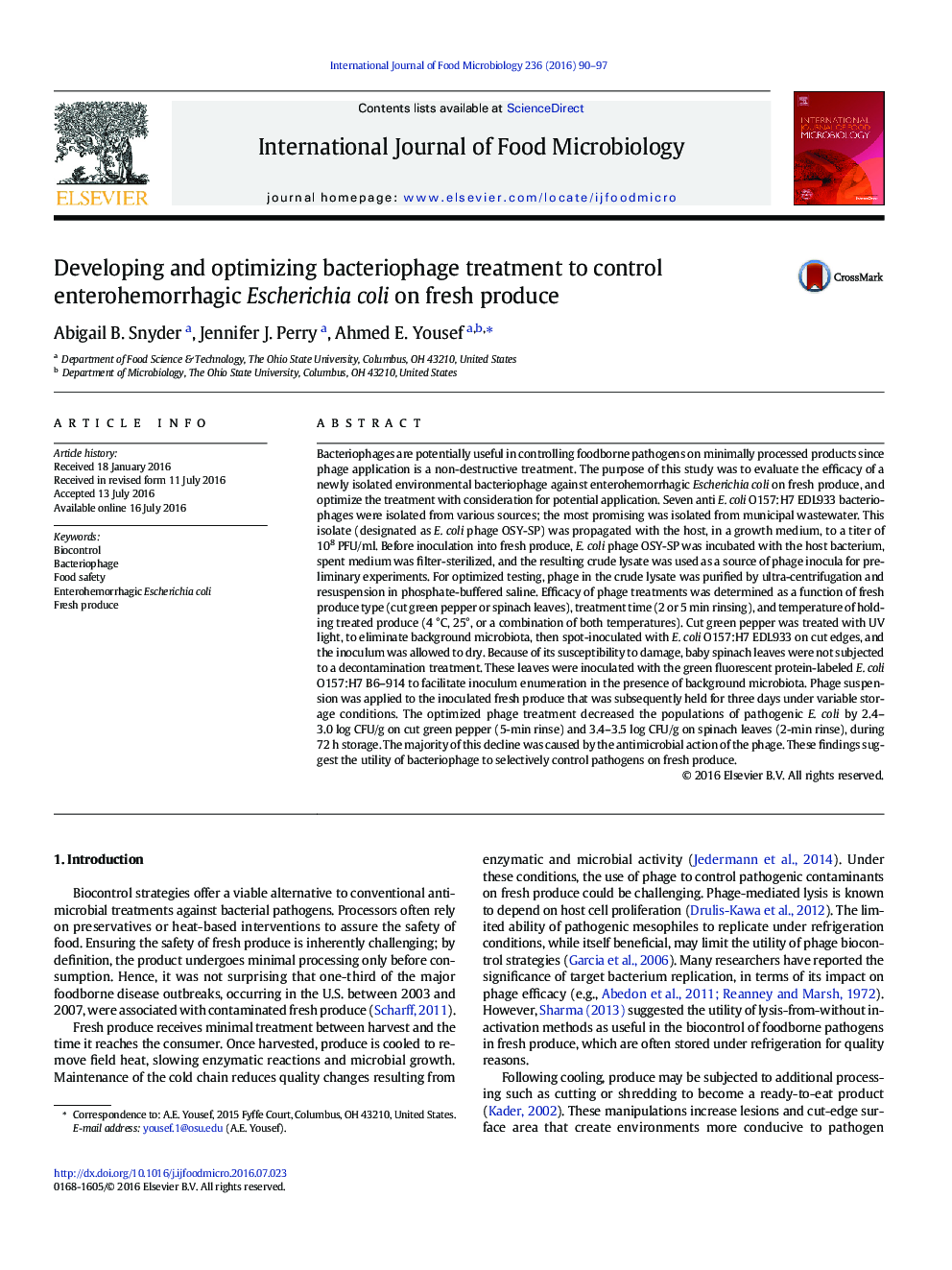| کد مقاله | کد نشریه | سال انتشار | مقاله انگلیسی | نسخه تمام متن |
|---|---|---|---|---|
| 4366248 | 1616547 | 2016 | 8 صفحه PDF | دانلود رایگان |

• Emphasizing the value of bacteriophages as biocontrol agents suitable for decontamination of fresh produce
• Demonstrating an approach that makes it possible to integrate this biocontrol strategy into existing fresh produce processes
• Detailed method for screening environmental sample for phages suitable for food application
Bacteriophages are potentially useful in controlling foodborne pathogens on minimally processed products since phage application is a non-destructive treatment. The purpose of this study was to evaluate the efficacy of a newly isolated environmental bacteriophage against enterohemorrhagic Escherichia coli on fresh produce, and optimize the treatment with consideration for potential application. Seven anti E. coli O157:H7 EDL933 bacteriophages were isolated from various sources; the most promising was isolated from municipal wastewater. This isolate (designated as E. coli phage OSY-SP) was propagated with the host, in a growth medium, to a titer of 108 PFU/ml. Before inoculation into fresh produce, E. coli phage OSY-SP was incubated with the host bacterium, spent medium was filter-sterilized, and the resulting crude lysate was used as a source of phage inocula for preliminary experiments. For optimized testing, phage in the crude lysate was purified by ultra-centrifugation and resuspension in phosphate-buffered saline. Efficacy of phage treatments was determined as a function of fresh produce type (cut green pepper or spinach leaves), treatment time (2 or 5 min rinsing), and temperature of holding treated produce (4 °C, 25°, or a combination of both temperatures). Cut green pepper was treated with UV light, to eliminate background microbiota, then spot-inoculated with E. coli O157:H7 EDL933 on cut edges, and the inoculum was allowed to dry. Because of its susceptibility to damage, baby spinach leaves were not subjected to a decontamination treatment. These leaves were inoculated with the green fluorescent protein-labeled E. coli O157:H7 B6–914 to facilitate inoculum enumeration in the presence of background microbiota. Phage suspension was applied to the inoculated fresh produce that was subsequently held for three days under variable storage conditions. The optimized phage treatment decreased the populations of pathogenic E. coli by 2.4–3.0 log CFU/g on cut green pepper (5-min rinse) and 3.4–3.5 log CFU/g on spinach leaves (2-min rinse), during 72 h storage. The majority of this decline was caused by the antimicrobial action of the phage. These findings suggest the utility of bacteriophage to selectively control pathogens on fresh produce.
Journal: International Journal of Food Microbiology - Volume 236, 7 November 2016, Pages 90–97